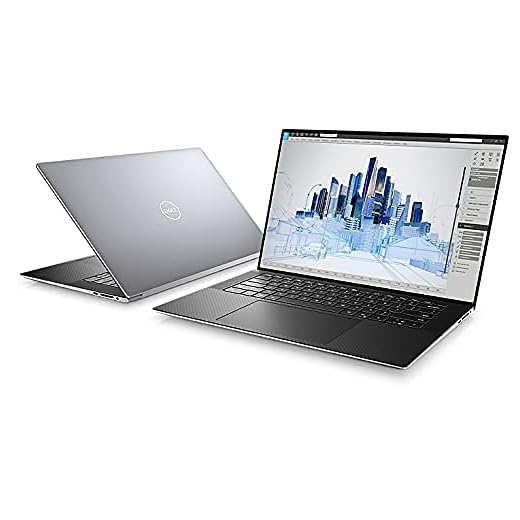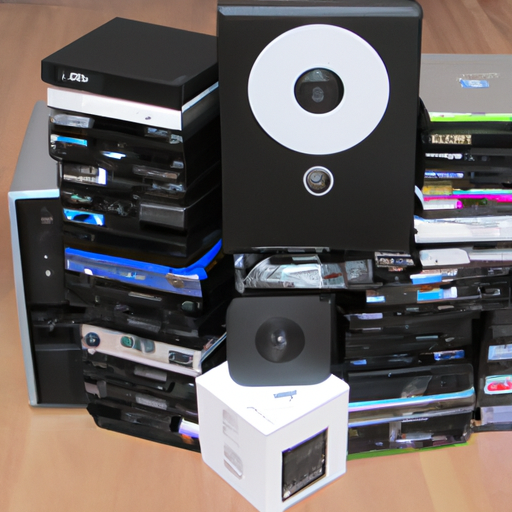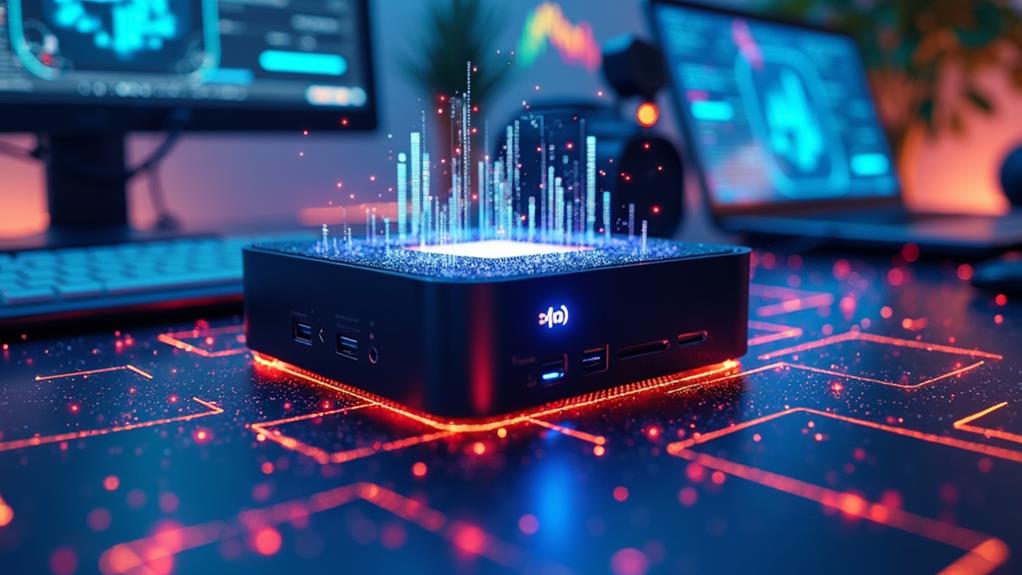



Have you ever wondered if mini PCs are capable of handling all your computing needs? Well, as versatile and compact as these devices are, there are certain tasks they may not be the best fit for. While mini PCs excel in everyday computing tasks such as web browsing, word processing, and media streaming, they may struggle with resource-intensive activities like video editing, gaming, and running complex software. In this article, we will explore the limitations of mini PCs and discuss why they may not be the ideal choice for certain demanding tasks. So, let’s uncover the tasks that mini PCs may not be well-suited for and help you make an informed decision when it comes to choosing the right device for your computing needs.
High-End Gaming
Insufficient Graphic Processing Capacity
When it comes to high-end gaming, having a powerful graphics card is essential. However, mini PCs often lack the necessary graphic processing capacity to handle the demanding requirements of modern games. These compact devices are usually equipped with integrated graphics or entry-level dedicated graphics cards, which may not be capable of delivering the immersive visual experience that avid gamers crave.
Limited Cooling Capacity
During intense gaming sessions, the components of a computer can generate a significant amount of heat. To prevent overheating and ensure optimal performance, adequate cooling is essential. Unfortunately, mini PCs often struggle with limited cooling capacity due to their compact size and restricted airflow. This can lead to thermal throttling and a decrease in gaming performance, as the system needs to reduce its power to prevent damage from excessive heat.
Inadequate Power Supply
High-end gaming requires a substantial power supply to meet the energy demands of power-hungry components such as high-performance CPUs and graphics cards. Mini PCs, due to their size constraints, often have limited power supplies that may not be able to deliver the necessary wattage to support the hardware required for an optimal gaming experience. This can result in system instability and performance issues, especially when trying to run demanding games at maximum settings.
Professional Video Editing
Lack of Hardware Resources
Video editing is a resource-intensive task that requires a robust computer setup. Mini PCs, being designed for compactness and energy efficiency, often lack the necessary hardware resources to handle the demands of professional video editing. These compact devices typically have limited processing power, lower RAM capacities, and restricted upgrade options, which can significantly hinder the efficiency and speed of video editing workflows.
Insufficient Storage Space
Video editing projects often involve working with large file sizes, including high-resolution videos, raw footage, and various multimedia assets. However, mini PCs typically have limited storage space, often relying on smaller solid-state drives or compact hard drives. This can lead to frequent storage management issues, with insufficient space to store and organize all the necessary files, thereby hindering the overall video editing process.
Inadequate Rendering Capabilities
Rendering is a crucial part of video editing, where the computer processes and exports the edited footage into the final video file format. Mini PCs, due to their limited processing power and restricted graphic capabilities, may struggle with rendering tasks, resulting in longer rendering times and potential compromises in video quality. For professional video editors who work on tight deadlines and require high-quality renderings, a mini PC may not provide the necessary capabilities to meet their needs.
3D Modelling and Rendering
Inadequate Processing Power
3D modeling and rendering require substantial processing power to handle complex calculations and generate realistic visuals. Unfortunately, mini PCs often lack the necessary processing capacity to effectively perform these tasks. The limited power of mini PC CPUs can lead to sluggish performance, longer rendering times, and difficulties in handling intricate 3D designs.
Inadequate Graphic Capabilities
Creating and visualizing 3D models often requires a powerful graphics card capable of rendering high-resolution textures and detailed geometry in real-time. However, mini PCs typically offer limited graphic capabilities, which can result in a lower quality viewing experience. Users may struggle with laggy rotations, pixelated textures, or even an inability to display complex 3D models altogether.
Mechanical Limitations
Mini PCs are designed to be small and compact, which often results in physical limitations, such as limited space for additional hardware components. In 3D modeling and rendering, additional components like specialized graphics cards or dedicated rendering hardware can significantly enhance performance. Mini PCs, with their limited expandability, may not be able to accommodate these specialized components, limiting their capability to handle advanced 3D modeling and rendering tasks effectively.
Large Scale Data Processing
Limited Processor Cores and Threads
Large scale data processing often requires significant computational power to handle complex algorithms and vast amounts of data. However, mini PCs typically come with fewer processor cores and threads compared to their larger counterparts. This limited processing power can result in slower data processing times and hinder the overall efficiency of large-scale data processing tasks.
Insufficient RAM for Data Crunching
Processing large datasets requires a significant amount of RAM to efficiently store and manipulate the data. Mini PCs, due to their compact size and cost constraints, often come with limited RAM capacities. This can lead to bottlenecks when working with massive datasets, with the system struggling to allocate sufficient memory, resulting in slower processing speeds and potential stability issues.
Lack of Instant Access Storage Options
Efficient large-scale data processing often relies on fast storage options, such as solid-state drives (SSD) or direct-attached storage (DAS), to provide instant access to data. Unfortunately, mini PCs may have limited storage options or only support slower storage options like traditional hard disk drives (HDD). This can lead to slower data retrieval and overall decreased performance when working with large datasets.
Multiple Virtual Machines Operation
Limited Multithreading Support
Running multiple virtual machines (VMs) simultaneously requires robust multithreading support to effectively allocate computing resources to each instance. However, mini PCs, often equipped with low-power processors, may struggle to handle multiple VMs efficiently. This can result in slower performance, increased lag, and challenges in virtual machine management.
Insufficient RAM
Each virtual machine needs a dedicated portion of RAM to ensure smooth operation and avoid performance degradation. Mini PCs typically come with limited RAM capacities due to their compact size. This can make it challenging to allocate sufficient memory for each virtual machine, resulting in increased disk swapping, slower response times, and potential impacts on overall system stability.
Limited Storage Option
Running multiple virtual machines requires adequate storage space to accommodate the operating systems, software, and data of each instance. However, mini PCs often have limited storage options due to their compact size. This can restrict the number of virtual machines that can be hosted on the system and limit the flexibility and scalability of virtual machine deployments.
Server Hosting
Limited Scalability
Server hosting often requires the ability to scale up resources as demand increases. Mini PCs, designed for compactness and energy efficiency rather than scalability, may struggle to meet the demands of hosting services that experience heavy traffic. Lack of expandability and limited hardware options can hinder the ability to scale server resources efficiently, leading to potential performance bottlenecks and degraded user experience.
Insufficient RAM for Heavy Trafficking
Hosting services that experience heavy traffic require ample amounts of RAM to handle the concurrent requests efficiently. However, mini PCs typically come with limited RAM capacities, posing a challenge when hosting resource-intensive applications or handling large numbers of simultaneous connections. Insufficient RAM can lead to slower response times, increased latency, and potential service disruptions.
Limited Storage Options for Data Serving
Server hosting often involves storing and serving large amounts of data. Unfortunately, mini PCs may have restricted storage options due to their small form factor. This limitation can hinder the ability to store and manage data efficiently, potentially leading to slower data retrieval times and challenges in scaling up storage as data demands increase.
Resource-Heavy Programming
Insufficient Processing Power
Resource-heavy programming tasks, such as compiling large codebases or running complex algorithms, often require substantial processing power. Mini PCs, usually designed for energy efficiency and compactness, may not provide the processing capacity necessary to handle these resource-intensive programming tasks efficiently. This can result in longer compile times, slower execution speeds, and decreased productivity for programmers.
Limited RAM Capacity
Resource-heavy programming often involves working with massive datasets or running memory-intensive applications. However, mini PCs often come with limited RAM capacities, restricting the amount of memory available for these programming tasks. Insufficient RAM can lead to frequent disk swapping, slower performance, and potential stability issues, making resource-heavy programming less efficient and more cumbersome.
Inadequate Storage
Resource-heavy programming tasks often require ample storage space to store codebases, libraries, and large datasets. However, mini PCs, with their compact size, may provide limited storage options. This can lead to insufficient storage space for programmers working on extensive projects, necessitating frequent data management and potentially impeding the smooth workflow of resource-heavy programming tasks.
High Resolution Multi-Monitor Setups
Limited Video Output Options
High-resolution multi-monitor setups often require multiple video outputs to connect the monitors. However, mini PCs, due to their compact size, may have limited video output options. This limitation can make it challenging to connect multiple monitors or achieve the desired screen configuration, limiting the potential for high-resolution multi-monitor setups.
Inadequate Graphic Processing Power
High-resolution multi-monitor setups demand powerful graphics processing units (GPUs) to handle the increased display resolutions and ensure smooth performance. Mini PCs typically come with integrated graphics or entry-level dedicated graphics cards, which may struggle to deliver the required graphic processing power for high-resolution multi-monitor setups. This can result in lag, slow refresh rates, and decreased visual quality.
Insufficient Power Supply
Powering multiple high-resolution monitors and a powerful graphics card requires a robust power supply. Mini PCs, with their compact form factors, often come with limited power supplies that may not meet the energy demands of high-resolution multi-monitor setups. This can lead to instability, system crashes, or even damage to the hardware due to inadequate power supply.
Scientific Computing and Simulation
Lack of Computational Power
Scientific computing and simulation tasks often involve complex mathematical calculations and simulations that require substantial computational power. Mini PCs, designed for compactness and energy efficiency, may struggle to provide the necessary processing capacity for these computationally intensive tasks. This can result in slower simulation times, longer computation periods, and limited productivity for scientists and researchers.
Inadequate RAM for Simulation
Simulations often require a significant amount of RAM to efficiently store and manipulate the data being generated. However, mini PCs typically come with limited RAM capacities, posing challenges for simulations that deal with substantial datasets. Insufficient RAM can lead to slower simulation speeds, increased disk swapping, and potential stability issues, hindering the accuracy and efficiency of scientific computing tasks.
Limited Cooling Capabilities
Scientific computing tasks can put a significant strain on the computer’s components, generating substantial amounts of heat. Adequate cooling is crucial to maintain optimal performance and prevent hardware damage. However, mini PCs often struggle with limited cooling capabilities due to their compact size and restricted airflow. This can lead to thermal throttling, increased operating temperatures, and potential impacts on the accuracy and reliability of scientific simulations.
Running Latest Software at Max Settings
Inadequate Processing Power
Running the latest software at maximum settings often requires a powerful processor to handle the increased computational demands. Mini PCs, designed for compactness and energy efficiency, may not provide the necessary processing power to run the latest software at maximum settings smoothly. This can result in lag, slow response times, and decreased performance, limiting the overall experience and potential capabilities of the software.
Limited Graphics Capabilities
The latest software often comes with advanced graphical features, including high-resolution textures, intricate visual effects, and realistic simulations. However, mini PCs often have restricted graphics capabilities, such as integrated graphics or entry-level dedicated graphics cards. This limitation can prevent users from enjoying the software’s full graphical potential, resulting in reduced visual quality and less immersive experiences.
Inadequate Storage
Running the latest software, especially in resource-intensive applications, often requires ample storage space to accommodate the software installation and additional files. Mini PCs, with their compact size, may offer limited storage options, leading to insufficient space to install and store the latest software. This can hinder the ability to work with large files, limit software updates and patches, and potentially restrict the overall functionality of the software itself.
In conclusion, while mini PCs have their advantages in terms of portability and energy efficiency, they are not well-suited for certain tasks that demand high performance, extensive resources, and ample storage capabilities. Whether it be high-end gaming, professional video editing, 3D modeling and rendering, large-scale data processing, running multiple virtual machines, server hosting, resource-heavy programming, high-resolution multi-monitor setups, scientific computing and simulation, or running the latest software at max settings, mini PCs often struggle to meet the demanding requirements of these tasks. Therefore, individuals or professionals engaged in these activities may need to consider alternative computing options that can provide the necessary power, resources, and storage to accomplish their goals effectively.
Disclosure: As an Amazon Associate, I earn from qualifying purchases.






